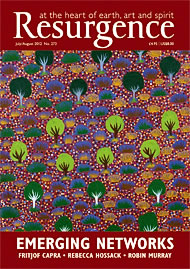This book, originally intended to accompany an exhibition at Gagosian gallery in London in 2010, was eventually published long after the exhibition closed. Yet the memory of the work shown will surely be still vibrantly alive for those lucky enough to have experienced it. For those who did not, the book is more than simply the record of that exhibition. It is perhaps as good a summary of James Turrell’s work as any book could be, for no record can replace the original experience. His art creates a unique encounter for the viewer, and the experience of looking at a photograph reproduced on a page is far different from the embodied event of standing in a room devoid of any obvious architectural reference bathed in light of changing colour that alters one’s perception and sense of reality.
The book also presents a record of Turrell’s major project Roden Crater. Since l979 Turrell has been working to transform an extinct volcanic crater on the edge of the Painted Desert in Arizona into an observatory. When he works on pieces like the crater or his smaller sky-watching spaces, he says, “I’m working on bringing the cosmos to you,” enabling the visitor to “feel the presence of gathered starlight”.
Playing with light and offering us landscapes created entirely from light, Turrell shows us how we construct reality, mostly without any awareness that we are doing so. He makes light tangible and in so doing expands both our sense of what is real and our awareness of how we create this. By bringing our attention to this process his art takes us far beyond the confines of the gallery, both in time and space – into somewhere both seen and felt that is both outer and inner, remote and intimate, a rare extension of our common experience.
From holographic works that leap out of frames towards us, to the partial immersion of sitting in his sky spaces or rooms of changing colour, to the total immersion of a work like Bindu Shards in which the individual viewer lies on a sliding bed within a sealed chamber exposed to programmed cycles of light and sound, Turrell’s works invite us to a changed reality. Intellectually, somatically and imaginatively these works change the frequencies of our brainwaves, stimulate what the artist calls “behind-the-eyes” seeing and thus inspire and engender meditative states that alter our perception.







